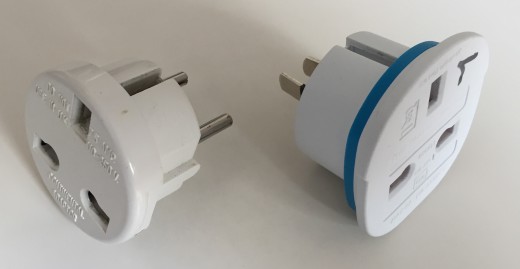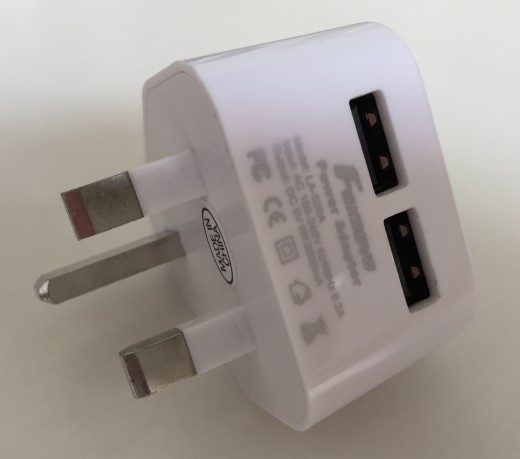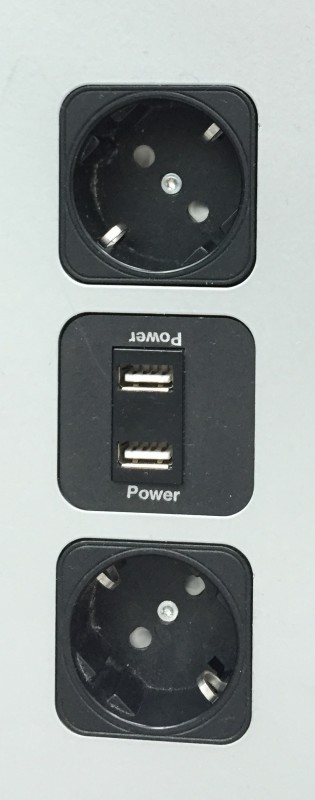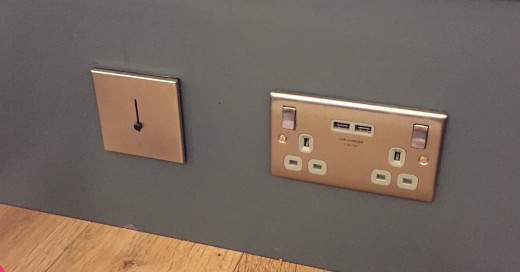Power outlets when traveling – and USB again
All through my career I have traveled quite lot for my work and find it hard to imagine any other kind of life. It can be hard to explain to people, who have not experienced business travel, that it is not one long vacation, particularly because, at times, it can be fun. It is also tiring. I cannot fully explain why just moving around the planet leaves me so weary. Certainly the hassles at airports etc. take their toll, but I think that just adapting to change is more taxing than one might expect.
Our high tech world helps us cope with change in some ways – keeping in touch with home has never been easier – but it also introduces new challenges …
The most notable challenge is electrical power. We all have numerous devices that either need to be plugged in to get power to operate or need to be charged. This results in two issues that need to be considered:
- power outlets [and voltage/phase] vary from one country to another
- different devices need different chargers/cables
Modern equipment tends to be insensitive to voltage and phase. So the days of American devices, which expected 117 volts, exploding when presenting with 230 volts in Europe, are mostly passed. The fact remains that different countries use different kinds of plugs and sockets, but this can mostly be addressed by means of adapters. For me, there are really only three kinds of socket: the chunky 3-pin UK variety, the slightly more elegant 2- or 3-pin European type, and the tiny 2- or 3-pin US ones. The differences are not just perversity – the way electrical systems are configured varies between countries. The UK system, though slightly cumbersome, is incredibly safe – every plug contains a fuse, for example. On the other hand, I like the compactness of US connectors, but the safety worries associated with higher currents do disconcert me. In any case, I just carry two adapters in my bag and I am all set:
In the past, I needed to carry a multitude of different chargers and cables and it was a big challenge if something was lost or forgotten. Those days have [almost] passed. Almost everything that I carry can be charged using a USB power outlet using a cable with either a micro-USB or Lightening connector. I have micro-USB to Lightening adapters too, which minimise the number of bits of wire I carry. This combination covers my iPhone, iPad, Kindle, camera, back-up charging pack and a few other odds and ends. To make life even simpler, I have a small charger with 2 USB outlets:
Although 3 or 4 outlets might be better, with care, this is a good compromise.
I have very recently introduced a new complication: the thing my wife calls my New Best Friend – a MacBook Pro. Having traveled for a couple of years with just my iPad – no laptop at all – with no real problems, I am rather tempted to lug along this delightful machine, which needs its own power supply. Perhaps if I had bought a MacBook Air or the New MacBook …
As I wrote about recently life is set to get better, as USB 3.1 and the Type C connector have the potential to simplify matters a lot. All I can say is: bring it on.
In all fairness, my life is sometimes eased when places that I visit or stay at make an effort to help travellers. For example, occasional hotels in Europe have UK power outlets, which is a nice touch. However, I have observed that some airports are really upping their game. At Munich [MUC] for example, I observed that all around the seating areas in the departure hall were these:
This is a pair of standard European outlets, but also USB power sockets! But, it gets better. My “home” airport is Birmingham [BHX] and there, in a favorite food outlet, they have this in every booth:
Not only power and USB power, but a dimmer switch to adjust the table lighting for optimal screen usage. Or is that to create a romantic atmosphere when setting off on vacation? 🙂
Comments
Leave a Reply
You must be logged in to post a comment.




Your place is valueble for me. Thanks!…
adobe photoshop serial key http://adobephotoshopcrackserialkey.blogspot.com/